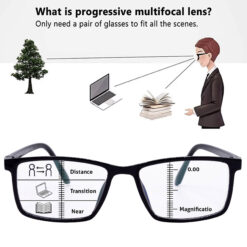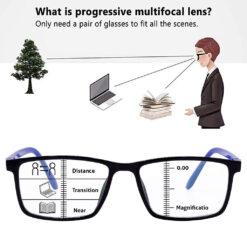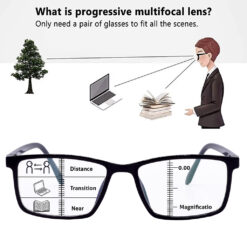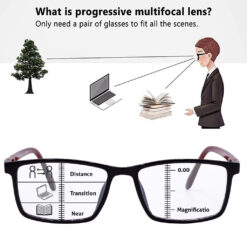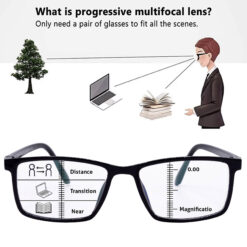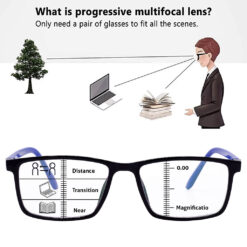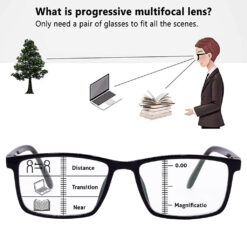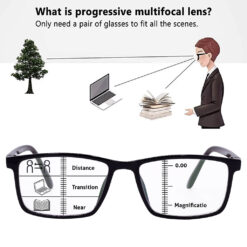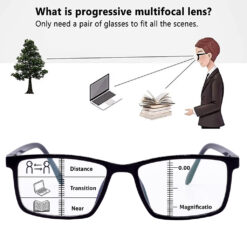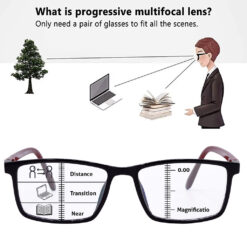Progressive Reading Glasses
Progressive Reading Glasses
Progressive Reading Glasses
Progressive Reading Glasses
Progressive Reading Glasses
Progressive Reading Glasses
Progressive Reading Glasses
Progressive Reading Glasses
Progressive Reading Glasses
Progressive Reading Glasses
Progressive Reading Glasses
Progressive Reading Glasses
Progressive Reading Glasses
Progressive Reading Glasses
Progressive Reading Glasses
Find Reading Glasses for Women That Fit Real Life
Shopping for reading glasses for women shouldn’t feel complicated; the right pair simply makes small text crisp, cuts down squinting, and keeps eyes relaxed during books, bills, recipes, and long screen sessions, and many women start noticing near-vision changes in their early to mid-40s due to presbyopia, which is normal and often managed with readers or prescription reading glasses. A personal rule that works well is to focus on clarity first, then comfort, then style—pick the lens type that suits daily tasks, ensure a lightweight frame that doesn’t pinch, and finally choose a look that complements face shape and wardrobe for easy, confident wear. If screens are part of the day, blue light blocking reading glasses and anti-glare options can help with light sensitivity and overall visual comfort, while keeping expectations realistic about digital eye strain being mostly about long near-focus time rather than blue light alone.
Why Reading Glasses for Women Matter Today
Reading glasses for women are more than magnification; they unlock day-to-day independence, reduce eye fatigue, and keep focus on what matters, and recent evidence even links access to appropriate readers with improved productivity, confidence, and community participation among women in real-world settings. For women juggling multitasking across print, screens, and hobbies, the right reading specs reduce headaches, cut down arm’s-length reading, and bring back comfortable near work, which is especially relevant as presbyopia progresses gradually over time. This shift typically starts around 40, so it’s helpful to think of reading glasses as a friendly tool rather than a medical alarm—an optometrist can fine-tune power for specific distances like books vs laptop screens, which are viewed slightly farther away.
Signs it’s time to get reading specs
Common signs include needing brighter light for small print, holding text farther away, frequent squinting, or headaches during close work, and these are classic presbyopia signals that often appear in the early to mid-40s and slowly progress. If these sound familiar, trying a lower power for screens and a slightly stronger power for close-up tasks is typical guidance, but getting a checkup ensures there’s no underlying eye condition and confirms the best power per task. Many women find that a single pair near the +1.00 to +2.50 range helps, but the exact choice depends on reading distance and comfort during everyday use.
Choosing between ready readers and prescription reading glasses
Ready readers are quick and affordable for standard use, while prescription reading glasses shine when there’s astigmatism, unequal powers between eyes, or specific working distances like crafts or extended computer sessions requiring customized clarity. If most tasks are at one consistent distance, single vision glasses are simple and effective; for mixed distances, consider tailored powers or separate pairs for reading, computer, and mobile use to keep vision crisp with less strain. The best route is to test what feels clear and comfortable, then confirm with an eye exam to lock in the right solution with room for future changes as needs evolve.
What power should women pick for reading?
An eye care professional will match power to habitual reading distance, and when deciding between two close strengths, experts suggest choosing the lower power to reduce the chance of discomfort from over-magnification during extended use. For screens placed farther than a book, a slightly lower power than print-reading strength typically feels better, and this small tweak often improves comfort for long desk days without sacrificing clarity for emails and documents. When in doubt, test a range briefly and prioritise the option that delivers clear text with minimal effort and no immediate eye strain across the intended task length.
Women’s Reading Glasses Styles That Actually Work
Style meets function effortlessly when frames are chosen to balance face shape, material weight, and trend elements like clear acetates, soft nudes, or geometric silhouettes that stay versatile with daily outfits across seasons. Oversized cat-eye, geometric angles, and retro rounds are all trending right now, and nude, blush, tortoiseshell, and gold accents keep ladies spectacle frames polished without being loud, which pairs well with both workwear and casual looks. Clear frames continue to be a favourite for minimalist wardrobes because they blend with everything, while subtle statement details like slender chains or lightweight metal finishes add personality without bulk.
Lightweight reading glasses for all-day comfort
Lightweight reading glasses reduce pressure on the bridge and temples, making them ideal for extended reading and screen time, and materials like acetate and thin metal can keep frames light while staying durable for daily use. For handbags or frequent on-off use, consider frames that balance lightness with sturdiness so hinges and arms hold up well, and look for comfortable nose pads or well-shaped bridges that sit steady during long sessions. A snug-but-gentle fit helps prevent slipping without leaving marks, which is essential when switching between reading specs and computer reading glasses during a busy day.
Stylish reading glasses for women: shapes, colours, and trends
This year, oversized cat-eye, geometric shapes, and retro-inspired rounds are strongly in, with blush tones, clear crystal frames, and soft tortoise patterns topping the style charts for women’s eyeglasses. Statement chains are also seeing a comeback as practical accessories that add flair while keeping specs handy, and these touches work especially well with clean, simple outfits where the frames are the star. If a wardrobe leans classic, slim gold metal or subtle nude acetate can be a game-changing pick, adding polish to everyday looks while remaining timeless across seasons.
Latest chashma design ideas for daily wear
The latest chashma design trends nod to sleek geometry, lightweight rims, and crystal-clear acetates that feel modern and easy to style with both office and casual wear, while oversized and rimless options create a barely-there look that still elevates the face. Transparent frames, gentle blush tones, and tortoiseshell textures are especially wearable because they match most palettes and don’t overwhelm smaller face sizes or minimalist wardrobes. For a touch of gloss without fuss, consider slender metal lines in gold or subtle silver that read sophisticated and pair smartly with blue cut reading glasses for screen time.
Ladies spectacle frames vs womens glasses: what’s different?
In daily conversation, “ladies spectacle frames” often emphasises style and frame design, while “womens glasses” can span both frames and lens choices like single vision or blue light options, but practically they overlap and the real decision comes down to fit, lens needs, and comfort for specific tasks. Focus on whether the frame weight and lens type match regular routines—reading, mobile use, and desk distance—then pick a style finish that complements skin tone and outfits to keep wear time high and strain low. A smart approach is to shortlist by lens needs first, then filter by frame silhouettes that flatter face shape and feel balanced throughout the day.
Lens Choices: Clarity, Comfort, and Screen Safety
The lens is where comfort truly begins: single vision lenses handle reading distance cleanly, while blue light blocking reading glasses and anti-glare options help with light sensitivity and reflections in screen-heavy environments. While blue-light blockers may support sleep and reduce sensitivity in bright indoor lighting, evidence is mixed on whether they fix digital eye strain itself, which often stems from long near-focus periods rather than blue light alone. That’s why pairing sensible screen habits—breaks, blinking, and proper lighting—with the right lenses gives the best balance of comfort and clarity during work and leisure.
Blue light blocking reading glasses and when to use them
Blue light glasses can help reduce light sensitivity and may support healthier sleep patterns when used in the evening, though clinical findings on strain relief vary, so consider them as one part of a comfort toolkit rather than a cure-all. For women working across laptops and phones late into the evening, a blue cut reading glasses setup can feel more comfortable and is easy to combine with anti-glare coatings for reflection control under LEDs and mixed lighting. If sleep disruption is a concern, blue-light-blocking closer to bedtime might help some users drift off faster, but maintaining screen hygiene remains important for consistent results.
Anti-glare reading glasses for screen-heavy days
Anti-glare (anti-reflective) coatings target reflections and improve contrast, which helps readability and reduces visual distractions on bright screens or under harsh indoor lighting, making them a practical everyday add-on for reading glasses for women. Even if blue light filtering is optional, many find anti-glare indispensable because it directly improves on-screen clarity in variable lighting conditions, enhancing comfort during long document or spreadsheet sessions. When combined with the right power for desk distance, anti-glare lenses can be the small upgrade that keeps eyes relaxed and focused throughout back-to-back tasks.
Computer reading glasses and mobile-use tips
Computer reading glasses are tuned for a slightly farther working distance than book reading, so a lower power often feels more natural for long screen blocks, minimizing strain and maintaining crisp text at typical monitor setups. For mobile use, shorter viewing distance may benefit from the higher power of regular reading specs, but holding the phone a bit farther and increasing text size can also reduce effort and blink reduction during scrolling. Consider a dedicated screen pair if daily work is laptop-heavy, and keep a compact reading specs pair for close-up tasks like labels, recipes, and fine print.
Blue cut reading glasses vs regular lenses
Blue cut lenses filter a portion of short-wavelength light and can improve comfort for sensitive users or those working at night, whereas regular single vision lenses offer clean magnification without spectral filtering and are often sufficient for daytime reading. If nighttime screen use is routine, blue cut may be worth it, while for daytime reading in balanced lighting, anti-glare alone could deliver most of the comfort at a lower cost or complexity. Since clinical evidence is mixed, personal comfort testing is smart—start with anti-glare, then add blue cut if late-evening use or sensitivity persists.
Fit, Face Shape, and Comfort
Fit affects both comfort and clarity; a well-sized frame keeps optical centers aligned, reduces sliding, and ensures the lenses sit at the intended distance for sharp, effortless reading over hours of wear. For round faces, angular or geometric frames add balance, while square faces often pair well with round or oval shapes, and heart-shaped faces tend to shine with soft cat-eye or slightly oversized balanced silhouettes. When the fit is right, women notice fewer pressure points, better stability while looking down at a page, and more consistent clarity during quick glance shifts between phone, book, and screen.
Single vision glasses for reading and desk work
Single vision reading glasses provide consistent magnification across the lens, making them straightforward and dependable for close tasks and laptop distances with the correct power set for each use-case. Many prefer one pair tuned to desk distance for work and a separate pair for closer print, which keeps neck posture natural and reduces the urge to hunch forward during long sessions. If priorities include simplicity and predictable clarity, single vision remains the most comfortable and budget-friendly route for daily reading needs.
Nose pads, temple design, and lightweight materials
Adjustable nose pads help fine-tune fit for varied nose bridges, and slim temples reduce side pressure during long wear, while materials like acetate and light metal keep frames durable yet comfortable for everyday switching between tasks. A gentle S-curve temple can improve behind-the-ear comfort, and spring hinges add flexibility that helps frames survive frequent on-off cycles without loosening quickly. If reading glasses for women will live in a handbag, prioritize compact cases and resilient hinges to keep specs safe from scratches and accidental bends on the move.
Frame sizes that make reading effortless
A frame that’s too wide slides; too narrow pinches and shifts optical alignment, so aim for a width that mirrors cheekbone span, with lenses tall enough to give a generous reading zone without requiring head tilts. For smaller faces, consider narrow or medium widths with modest lens heights; for larger faces, slightly oversized styles offer comfort without losing proportion and can suit current trends well. Ultimately, the best size is the one that stays put during page turns and screen glances, keeping text crisp across the full reading area.
Budget and Value
Affordable reading glasses can still look premium when material, hinges, and coatings are chosen wisely, and a well-made pair often outlasts multiple budget impulse buys by resisting wobble and scratches over time. If most use is at home, one sturdy pair may be enough; if constantly switching contexts, a budget “spare” alongside a primary pair can prevent downtime and protect the main specs from overuse wear. For screen-focused routines, spending a bit more on anti-glare and correct desk-distance power often pays back in comfort and productivity within days.
Affordable reading glasses that still look premium
Look for clean acetate finishes, even colouring, smooth hinge action, and consistent alignment when folded, as these details signal quality even at friendly prices and make womens reading glasses feel refined in hand. A clear or nude frame can read high-end without a premium tag, and these shades also pair well with blue cut reading glasses for versatile day-to-night use with minimal visual weight on the face. Consider scratch-resistant coatings and a protective case; these two small choices extend lifespan and keep lenses looking fresh longer.
Best budget reading glasses vs premium picks
Budget options work well for occasional reading or as backups, while premium picks shine with better coatings, lighter materials, and longer-lasting hinges that keep alignment true and comfort steady over time. If reading and screens fill most weekdays, premium anti-glare plus dialed-in power becomes a daily comfort upgrade that’s noticeable from the first session, especially under mixed indoor lighting. A good compromise is to go premium on the primary pair and keep an affordable spare for the handbag or bedside so there’s always a set within reach.
When to invest in prescription reading glasses
If words swim, one eye feels clearer than the other, or headaches persist despite otherwise suitable power, it’s time to see an eye care professional for prescription reading glasses that account for astigmatism and unequal powers. Prescription tuning is also helpful for specific working distances—crafts, music stands, or dual-monitor setups—where precise clarity beats generic magnification every time. Regular checkups from about 40 onward help catch eye conditions early and keep powers aligned with changing needs as presbyopia progresses gradually.
Product Comparison
Comparing lens types helps match specs to real routines, reducing trial-and-error and ensuring each pair has a clear purpose that adds comfort, clarity, or both. The goal is to pair reading glasses for women with the right enhancements—anti-glare, blue cut, or desk-distance power—so day-to-day tasks feel naturally easy without constant adjustments or eye strain cycles. With the basics set, styling is the fun part, and current trends offer plenty of flattering, lightweight options to fit every face and mood.
Reading specs vs computer reading glasses
Reading specs are optimized for close-up distances like books and labels, while computer reading glasses step down the power slightly for the farther monitor distance that keeps posture relaxed during typing and browsing. If a single pair must cover both, choose the distance used most; otherwise, two dedicated pairs avoid compromise and reduce fatigue from squinting or leaning to find the sweet spot. For mobile use, close reading power still wins, though bumping text size and improving lighting can reduce effort and extend comfort on smaller screens.
Blue cut reading glasses vs anti-glare reading glasses
Anti-glare directly reduces reflections and boosts contrast, which many users feel immediately on screens, while blue cut focuses on filtering short-wavelength light that can bother sensitive users and may help with evening comfort and sleep in some cases. Since digital eye strain often comes from long near-focus sessions rather than blue light itself, many women prioritise anti-glare first, adding blue cut if late-night work or sensitivity remains an issue. Trying both in-store lighting or work-like conditions is smart—choose the option that keeps text clear and eyes relaxed across real tasks and durations.
Reading glasses for mobile use vs desk distance
Mobile reading happens closer, so standard reading power usually suits phones and tablets, whereas desk setups benefit from slightly lower power to match monitor distance and reduce the urge to hunch toward the screen. For mixed use throughout the day, consider a primary desk pair and a compact mobile pair, or adjust font sizes and viewing distance to keep one power comfortable across both tasks when possible. Little tweaks like better lighting and 20–20–20 breaks also matter; these habits complement lens choices to keep comfort stable over long stretches.
Care, Durability, and Everyday Ease
A few simple habits—rinsing lenses before wiping, using microfiber cloths, and storing specs in a case—prevent scratches and keep vision crisp, extending the lifespan of both budget and premium frames. Regular hinge checks and occasional adjustments keep fit consistent, especially if specs travel in a handbag or shift on the nose during reading sessions. Anti-glare coatings benefit from gentle cleaners and soft cloths, and a quick daily wipe clears smudges that otherwise cause micro-squinting and subtle eye strain.
Cleaning, storage, and scratch resistance
Rinse dust, then wipe; this avoids grinding micro-particles into lens coatings, preserving clarity and the performance of anti-glare or blue cut finishes over time. A slim hard case prevents accidental compression in bags, and a backup microfiber tucked inside ensures quick smudge fixes on the go, keeping reading text sharp without repeated rubbing. If lenses do scratch, replacing them early often restores comfort and removes distracting haze that slows reading pace and increases blinking effort.
How to keep specs comfy for long reading sessions
Adjust nose pads to spread weight, make sure temples sit gently without pinching, and keep frames aligned so lenses center naturally in front of the eyes for effortless focus across the page. If reading for hours, take brief breaks to blink fully and refresh the tear film, especially under air conditioning or heaters where dryness creeps in unnoticed. A light, stable frame with the right power turns reading into a relaxed habit again, removing the constant fiddling that breaks concentration and flow.
When to replace power glasses or switch to new frames
If text that was once crisp becomes fuzzy at the same distance, power likely needs an update; if the fit starts sliding or pinching, a new frame size or lighter material can restore comfort quickly. Plan periodic checks from about 40 onward to keep presbyopia corrections up to date and to screen for any conditions that benefit from early attention. For frequent screen users, reassessing the balance between desk-distance power, anti-glare, and blue cut once a year keeps comfort consistent as routines evolve.
What’s Trending Next (2025–2026)
Oversized cat-eye, clear acetate, geometric edges, and soft nude palettes continue to dominate, offering easy styling with both work and casual outfits while staying flattering across many face shapes. Expect subtle metallic touches, refined bridges, and featherlight builds that feel almost weightless but hold shape over time, making womens reading glasses comfortable for extended sessions. Accessories like slim statement chains are sticking around as practical style add-ons that keep reading specs within reach and add a touch of personality to minimal frames.
Shapes, colours, and lightweight materials on the rise
Clear frames remain a breakout favourite for their versatility, blending seamlessly with everything from simple tees to tailored looks, while blush and tortoise tones add warmth and polish without overpowering smaller faces. Geometric silhouettes deliver modern structure that balances softer features, and slim metals in gold or satin finishes bring timeless elegance to daily reading setups. Lightweight acetates and fine-gauge metals help reduce fatigue, which matters when reading stretches from minutes to hours across a busy day.
Subtle fashion-forward details for ladies spectacle frames
Expect delicate gradients, textured arms, and thoughtful temple tips that improve grip and comfort while giving frames a refined finish that stands out up close without shouting across a room. Rimless and semi-rimless styles are also resurfacing with improved materials and edge polish, giving readers a floating, sophisticated look that pairs beautifully with anti-glare clarity on screens. The overall direction is clean, wearable style infused with just enough detail to feel special in daily life.
Practical trends for work-from-home and hybrid routines
Desk-distance tuning, anti-glare coatings, and blue cut options remain practical upgrades for hybrid routines where reading alternates between pages, laptops, and mobiles across varied lighting conditions during the day and evening. Clear frames and slim metals keep video-call reflections minimal while staying camera-friendly, and slightly taller lenses can expand the reading zone to reduce head movement during multitasking. Consider keeping a dedicated computer reading glasses pair near the workstation while a compact reading specs pair travels in the handbag for on-the-go clarity.
Quick Answers: People Also Ask
Do blue light glasses really help?
Blue-light glasses may support sleep and reduce light sensitivity for some users, but evidence is mixed on relieving digital eye strain itself, which more often stems from long near-focus sessions and reduced blinking during screen time. Many find the most noticeable comfort boost from anti-glare coatings plus healthy screen habits—breaks, blinking, and good lighting—alongside correctly powered single vision lenses for the working distance. If late-night screen use is common, blue cut reading glasses can still be worth trying to see if evening comfort improves personally.
How to pick the right power for reading glasses?
Match power to the task distance: books and labels are closer and often need a bit more power, while monitors sit farther and usually feel better with a slightly lower power for computer reading glasses. When choosing between two close strengths, optometrists often suggest the lower power to reduce discomfort over long use, and an eye exam helps confirm there’s no underlying issue and that each eye’s needs are met. Testing options quickly for clarity and comfort at real distances is a smart way to decide.
Are anti-glare lenses worth it for women who read a lot?
Anti-glare reduces reflections and improves contrast, which many notice immediately on screens or under mixed indoor lighting, resulting in easier reading and less visual distraction throughout the day. If most reading happens on devices, anti-glare is a high-value upgrade that pairs well with correctly set desk-distance power for smoother, more relaxed sessions. For evening use or sensitivity, consider adding blue cut after anti-glare if needed.
Are reading glasses okay if distance vision is fine?
Yes, readers don’t harm distance vision and are commonly used by those with clear far vision who need help with near tasks due to normal presbyopia changes from about 40 onward. It’s normal to rely on reading specs for close work while keeping distance vision uncorrected if it’s already clear, and an eye check ensures the best power and rules out other issues. Expect a short adjustment period; any initial dizziness usually fades as the eyes adapt to magnification.
Conclusion
Choosing reading glasses for women is simpler when priorities are clear: set the right power for the actual task distance, add anti-glare for screens, consider blue cut for evening comfort if helpful, and pick a frame that feels light, fits well, and complements personal style so it gets worn happily every day. Trends like clear acetate, soft nudes, and gentle geometric lines make it easy to look polished without sacrificing comfort, and single vision glasses keep reading, mobile use, and desk work crisp when the power matches the distance. With a little attention to coatings, fit, and care, reading specs become a small, daily upgrade that keeps words sharp, eyes relaxed, and routines flowing smoothly from morning to night.

